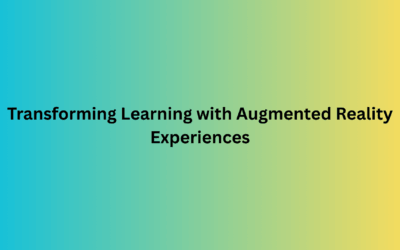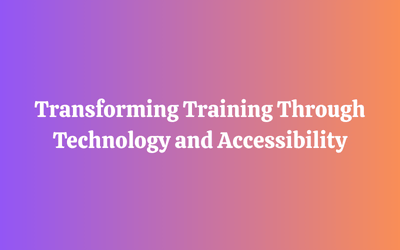What is Powered Learning?
Education is the foundation for both a fulfilling life and a prosperous career. People can learn new things, increase their knowledge, and develop their minds with its help. But as technology has advanced, fresh and innovative learning ways are now accessible, replacing the aging traditional educational systems. The application of technology to enhance the educational experience is known as “powered learning” in this situation.
How does powered learning work?
Powered learning technology is used in the organization to improve the learning process. It involves utilizing software and devices like computers, tablets, and smartphones to create an interactive and interesting learning environment. With the help of powered learning, Learners will be able to learn at their own pace and according to their own learning style.
The advantages of powered learning
There are several advantages to powered learning, some of them are as follows:
- Increased participation: Learning becomes more interactive and engaging thanks to the use of technology, which enables Learners to actively engage in the learning process.
- Learning that is personalized for each person: With the help of powered learning, Learners may learn at their own pace and in the way that suits them best, realizing their full potential.
- Learning that is personalized for each person: With the help of powered learning, Learners may learn at their own pace and in the way that suits them best, realizing their full potential.
- Technology has boosted student collaboration since it enables them to work together on tasks and projects.
- Access to a lot of knowledge: Technology has made it simple for Learners to get a wealth of information that enables them to study a range of disciplines outside of the organization.
- Better evaluation and assessment: Teachers are now better equipped to measure student development and provide more detailed, personalized feedback thanks to technology.
Example of Powered Learning
Listed below are a few examples of supercharged learning in action:
- The flipped organization allows Learners to learn at home by watching lectures, videos, and other course materials online. Discussions, group projects, and practical exercises make up the rest of the class day.
- Gamification is the use of game design elements in contexts other than gaming, such as education. For instance, gamification may be used in language learning software to boost student engagement through competition and rewards.
- Virtual Reality: Learners can experience real-world experiences in a safe environment by using virtual reality (VR) technology. For instance, by simulating a biology lab with VR technology, Learners can conduct research without having to purchase expensive equipment.
- Adaptive learning makes use of software that changes according to the student’s learning preferences and pace. This enables learners to learn at their own pace and ensures that before moving on to the next subject, they completely understand the material at hand.
- Mobile learning is the use of tablets and smartphones to offer educational content. This enables Learners to learn while on the go, making education easier and more accessible.
Challenges in Powered Learning
Despite the benefits of powered learning, several problems still need to be fixed. These include:
- Cost: Many schools and businesses find it difficult to implement powered learning since integrating technology into education can be costly.
- Limitations of technology: Occasionally, technology may be erratic, which obstructs learning.
- To guarantee that technology enhances rather than detracts from the learning process for both teachers and Learners, training is required.
- The use of technology raises questions about security and privacy. Educational institutions are accountable for the protection and security of Learners’ personal information.
Conclusion
A brand-new, cutting-edge approach to education called powered learning aims to enhance the learning process. It has several benefits, including better evaluation and assessment, individualized learning, increased cooperation, access to a wide range of knowledge, and higher engagement. However, it also presents several challenges, such as expenses, technology limitations, educational requirements, and privacy and security concerns.
Learn More
Our News
- AI
- Animations
- Articulate
- Articulate 360
- Articulate Engage
- Articulate Live
- Articulate Presenter
- Articulate Quizmaker
- Articulate Replay
- Articulate Review
- Articulate Storyline
- Articulate Storyline 3
- Articulate Studio
- bite sized learning
- Characters
- Content Library
- Corporate Communication
- E-Learning
- e-Learning Authoring Tools
- Employee Engagement
- Game-Based Learning
- Gamification
- Gamiflexer
- Go Sales
- Healthcare
- Instructional Design
- Interactivity
- Knowledge Transfer
- L&D Trends
- Learning
- Learning & Development
- Learning Experience platform
- Learning Management System
- LMS
- LXP
- Microlearning
- mLearning
- Mobile Learning
- Nugget Learning
- Online Training
- Peek
- Performance Support
- Preso
- Quiz and Assessment Platform
- Replay 360
- Rise
- SCORM
- Screen Capture
- Software
- Storyline 360
- Studio 360
- Training Management
- Trainings
- Uncategorized




